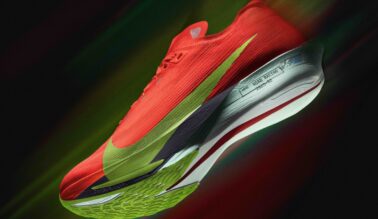This post may contain affiliate links. Please read our disclosure policy.
It seems so easy, right? You wait in line or get your number drawn, grab that shoe, run to eBay where you can flip a shoe that was $X for $Y. This sounds like an even more attractive hustle when $Y is upwards of $250. Times have changed a lot over the years with respect to reselling and flipping new releases. Costs have continued to increase across the board including the selling resale price, but if you take a hard look at the numbers, you might be putting in a lot of work for everyone but yourself. Putting it to the test, we will analyze several steps involved with a simple flip, their costs, and what matters most – the profit.
1) Shoe Price
As frustrating as it may be for consumers of virtually all industries, costs keep going up. With the standard rate of inflation of 3% even Nike and Jordan Brand are selling shoes for less than their historic prices of when the product was first introduced. While that is another discussion, the price of the shoes is not. The cost of an inline retro Jordan is $170.
2) Sales Tax
With the rare exception that you live in a sales tax-free state like Oregon, you are going to have to pay a toll whenever you buy anything including shoes. These rates vary far too much from state to state and city by city to come up with an average for this test. For the sake of this test, we will assume a sales tax rate of 8%. Keep in mind, that each percentage point up or down is only a swing of $1.70 on the pair of Jordans.
3) Shipping expenses
Buyer pays for shipping right? Well, you definitely can list your auction or sales listing that way, but consumers have been trained over the years thanks to free shipping on most eCommerce sites to look at listed prices as an “all in” price. Once again, this can vary greatly depending on chosen carrier, tracking package, speed of delivery, cost of the box, tape, labels, etc. For the sake of this test, we will assume an all-in shipping cost of $15 for a domestic shipment.
4) eBay fees
If you’re in the business of flipping shoes, time is everything. Sure, you can list your shoes on forums, beg for RTs on twitter, post to Instagram, and various other methods, but if you’re trying to exit a shoe quickly, eBay remains supreme. With more than $300M in sneaker sales annually, eBay makes itself the largest marketplace by miles for sneakers. These fees can vary tremendously with all the different listing options, but for the sake of simplicity and this test, we will assume a fixed price auction ended with a Buy-It-Now. For reference sake, here is the eBay fee calculator.
5) PayPal fees
Accepting payment online is quick, easy, and safe for both buyer and seller. With that convenience comes cost. Paypal is the standard for the sneakerhead community for online transactions on eBay. While there are varying rates dependent on volume, we will assume you are just getting started and have a discount fee of 2.9% + $0.30 transaction fee. With a greater number of pairs in the market and constant restocks destabilizing supply the price of flipped retro Jordans has fallen greatly over the past couple of years. We won’t assume the selling price, but rather model out the test with several prices to illustrate the variable costs.
| Selling Price | $225.00 | $240.00 | $250.00 | $260.00 | $275.00 |
| Shoe Price | $170.00 | $170.00 | $170.00 | $170.00 | $170.00 |
| Sales Tax | $13.60 | $13.60 | $13.60 | $13.60 | $13.60 |
| Shipping | $15.00 | $15.00 | $15.00 | $15.00 | $15.00 |
| eBay Fees | $22.80 | $24.30 | $25.30 | $26.30 | $27.80 |
| PayPal Fees | $6.83 | $7.26 | $7.55 | $7.84 | $8.28 |
| Net Profit | -$3.23 | $9.84 | $18.55 | $27.26 | $40.32 |
Crunching data is one thing, the fun part begins when you dive into analysis. We could draw all kinds of conclusions from this table, but we’ll list out some quick takeaways below:
1) The break-even point is $228.81. That’s right, you if you can’t sell that “$170 shoe” for $228.81 you are better off taking it back to the store with your receipt and beg for a refund.
2) eBay auction fees are the biggest winner post purchase. In fact, the reseller won’t earn more than eBay collects in listing and final value fees until the shoe has a selling price of $258.75.
3) eBay stays winning with its ownership of PayPal. In order for a reseller to profit more than the fees of eBay AND Paypal, you’re looking at a selling price of $269.27 or nearly $100 more than the price on the box of the shoes. Even here, the reseller is only profiting $35.33.
In conclusion, are we saying people should not resell? Definitely not. A hustle is a hustle and any hard work doing what you love should be respected; however, before you think you can buy at retail, mark up the price a couple bucks and walk away a winner, do the math.




